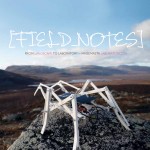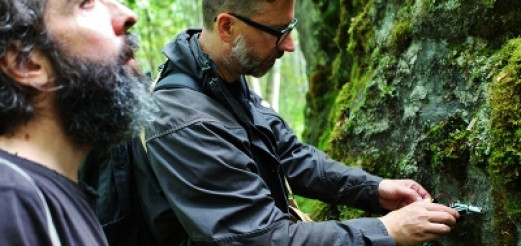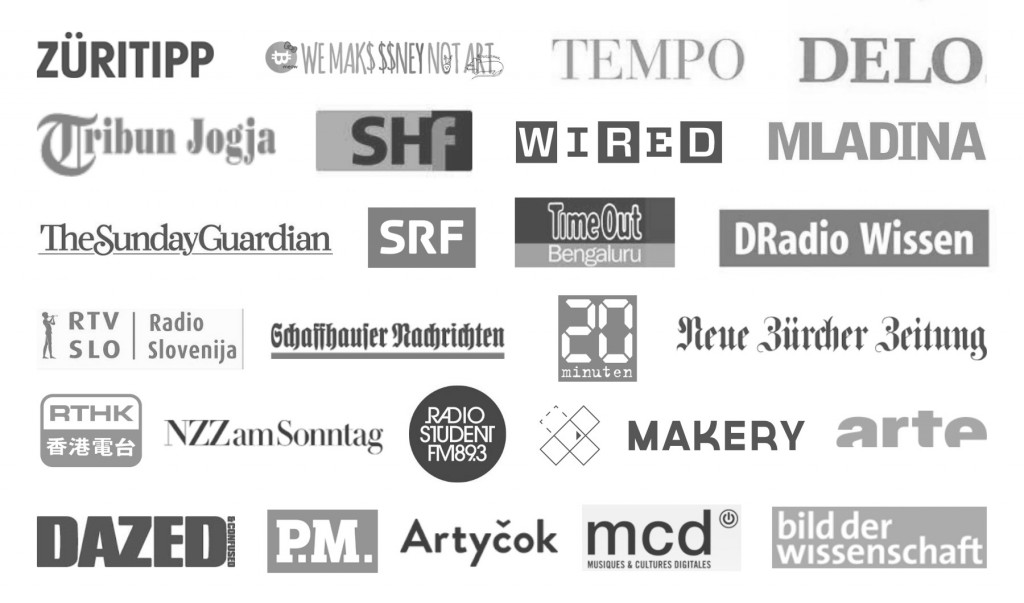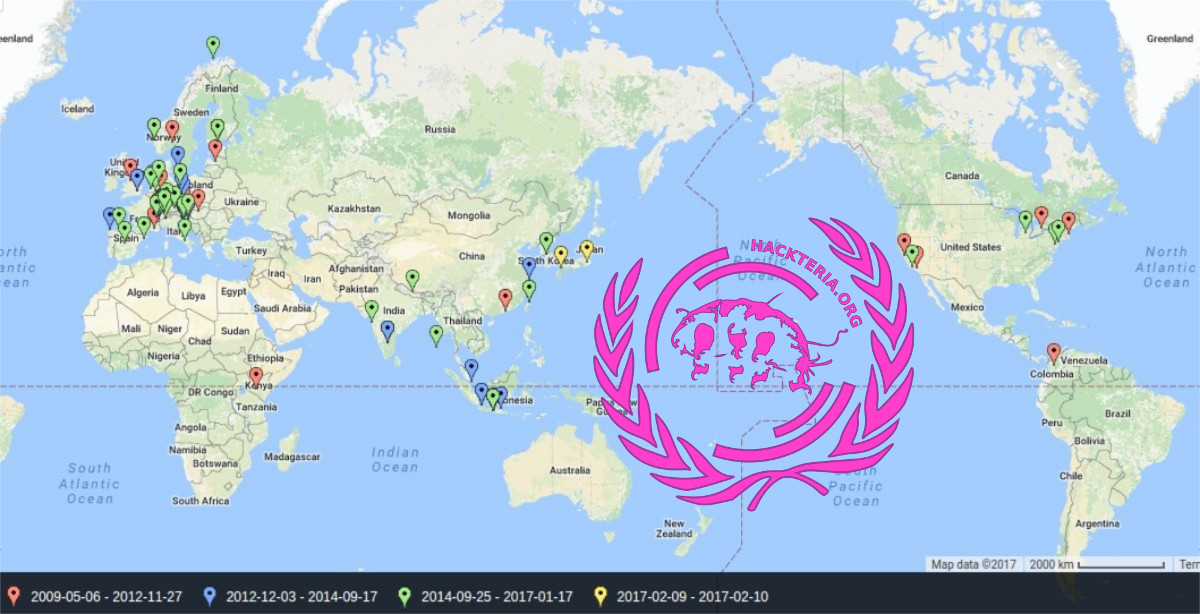In this second part of the series of talks/presentations aiming to discuss openly the multitudes of bio art | sci | tec and related practices we invited a very interesting guest from Finland, who’ll present their activities with the Finnish Society of Bioart, aswell as present their residency program in Kilpisjärvi in northern Lappland. Additionally, a special guest, Yashas Shetty (IN), Co-Founder of Hackteria, will also be present and give an overview of their activities in Bangalore, India.
HSC (Hackteria Swiss Curriculum) is a cooperation of Hackteria and Corner College, Kochstrasse 1, 8004 Zürich. Find map here
HSC#2: Hybrid Ecology | The Finnish Society of Bioart
Date: 16.06.2014 – 20h
Speaker: Erich Berger (AT/FI)
We are living in a technologically informed world. Our life takes place in hybrid space merging the physical and virtual. As we continue to develop and use technologies which now also include the manipulation of the living we are challenged to rethink our concepts and relations to the environment we inhabit. He will introduce various activities hosted by the Finnish Society of Bioart, their ongoing residency program in Kilpisjärvi and their most recent publication ““Field_Notes – From Landscape to Laboratory – Maisemasta Laboratorioon”.
Download excepts from the book here.
Erich Berger is a visual artist and trained as a communication engineer and in philosophy. He has produced interactive art installations, artistic wearable interfaces, audiovisual performances and sound-art, which have been shown internationally since the mid 90ties. He also works as educator, curator, content developer and facilitator, focusing on the intersection of art, technology and science. Research interests include telerobotics and telematically mediated environments, interactive participatory spaces, sonification and visualisation of real-time processes with related questions in composition, semiotics and linguistics, generative processes, feedback situations and autopoietic systems. His research engages with hybrid space, deep time processes, biology and ecology and involves the facilitation of interdisciplinary environments for working and learning. His research also includes close cooperation with international partners within the arts and sciences.
HSC#2.1: special lecture Hackteria | Art/Sci Bangalore
Speaker:Yashas Shetty (IN)
Our special guest, Yashas Shetty (IN), Co-Founder of Hackteria and very active in the Art/Sci Bangalore and Srishti School for Art, Design Technology, will also be present and join the discussion reflecting on bioart/DIYbio practices in Bangalore and India in general. After his earlier work as a musician/composer working on environmental data and sonification as an artist-in-residence at NCBS, he co-founded CEMA, the Center for Experimental Media Arts, as part of Srishti School for Art, Design Technology, a very advantgarde art school in Bangalore. Since 2009, together with students from art & design, he started to investigate various artistic and educational approaches to work with synthetic biology, a radical form of genetic engineering. Students were introduced into hands-on laboratory work and the design of new functions to be engineering into living organisms, such as the e.coli bacteria. They published various books and brochures about these artistic explorations into one of the most critically discussion novel field of biology. Throughout the years, together with the students, their approach has shifted more and more away from the high-end collaboration with well equipped university biolabs and they digged into the Do-It-Yourself approach (related to the term Jugaad in Hindi), enabling general citizens to get included into biological research. Since then their focus primarily lies in Citizen Science, through co-design and active community engagement, they recently worked on projects of water quality monitoring, biodiversity, ecology and established global collaborative projects, such as BIO-DESIGN for the REAL WORLD, with EPFL (Switzerland) and Lifepatch (Indonesia).
http://www.hackteria.org/wordpress/projects/discourse/hsc2-hybrid-ecology/
http://www.hackteria.org/wordpress/network/artscienceblr/
http://www.corner-college.com/Veranstaltungen/1402869600/830
Field_Notes – From Landscape to Laboratory – Maisemasta Laboratorioon, Finnish Society of Bioart, 2013
 Every second year the Finnish Society of Bioart invites a significant group of artists and scientists to the Kilpisjärvi Biological Station in Lapland/Finland to work for one week on topics related to art, biology and the environment. “Field_Notes – From Landscape to Laboratory” is the first in a series of publications originating from this field laboratory. It emphasizes the process of interaction between fieldwork, locality and the laboratory. Oron Catts, Antero Kare, Laura Beloff, Tarja Knuuttila amongst others explore the field and laboratory as sites for art&science practices.
Every second year the Finnish Society of Bioart invites a significant group of artists and scientists to the Kilpisjärvi Biological Station in Lapland/Finland to work for one week on topics related to art, biology and the environment. “Field_Notes – From Landscape to Laboratory” is the first in a series of publications originating from this field laboratory. It emphasizes the process of interaction between fieldwork, locality and the laboratory. Oron Catts, Antero Kare, Laura Beloff, Tarja Knuuttila amongst others explore the field and laboratory as sites for art&science practices.
BETWEEN LANDSCAPE AND LABORATORY
How to define the evolving field of art&science, including bioart, and where can the historical trajectory of this area within the arts be found? In very general terms one could divide currently existing artistic interests in the field into two very broad subject categories: artists that are concerned with the environment, and artists whose work focuses on the human as subject matter. The previous group deals with environment, landscape, natural phenomena, plants, and animals typically in their natural habitat. The latter group is interested in the human as such and within his technologically augmented environment. This includes work with human enhancement and organs, with devices and manipulation of human and animal cells. The work is carried out either under laboratory conditions or with technologically mediated social structures including human and non-human actors. Shared aspects across the field are e.g. politics, ethical debates and projections of the possible futures. This publication is specifically focusing on work that is concerned with the environment and ecology. However, the human is strongly present in all the arguments, statements and accounts. It is very apparent that we live in the era of the anthropocene, where viewpoints and actions are unavoidably developed with and projected from a human perspective.
The publication is edited by Laura Beloff, Erich Berger and Terike Haapoja. It is bilingual in Finnish and English and contains 17 articles and additional material of Finnish and international contributors. You can buy the book now from their website.


















It‘s quite in here! Why not leave a response?